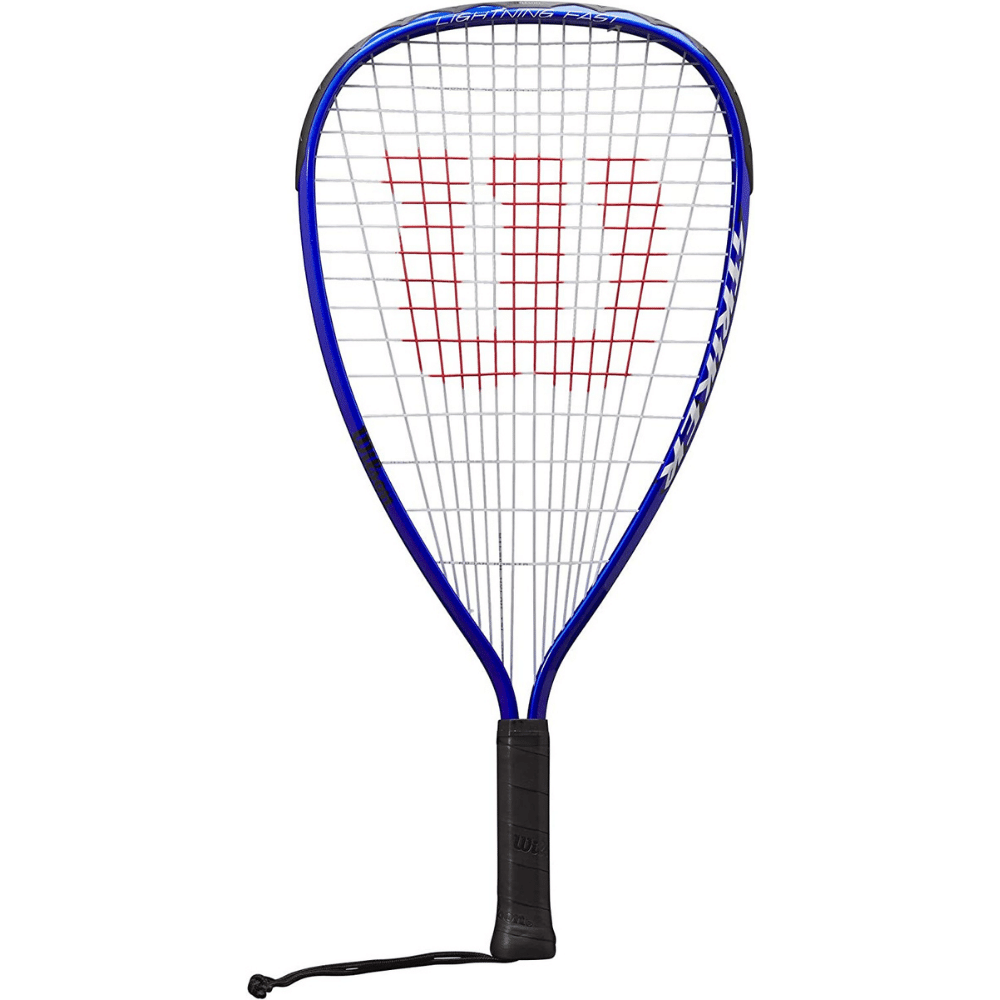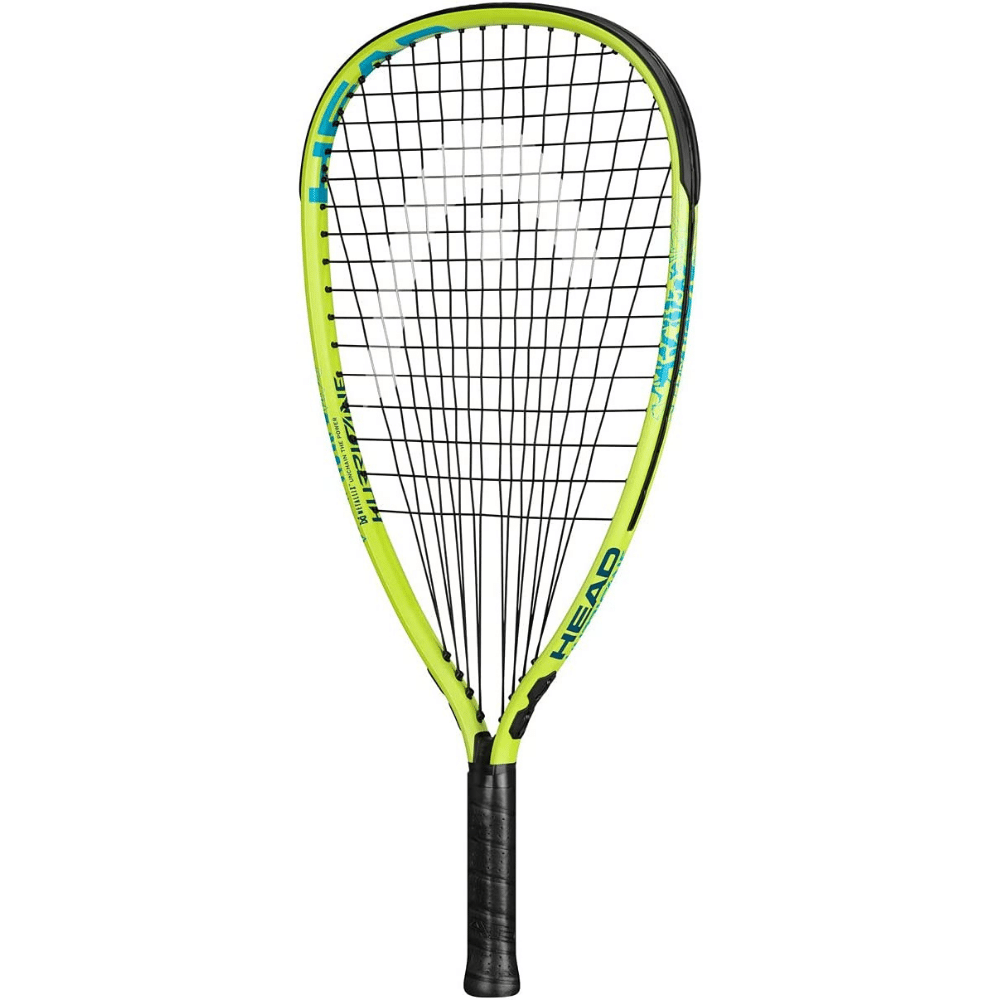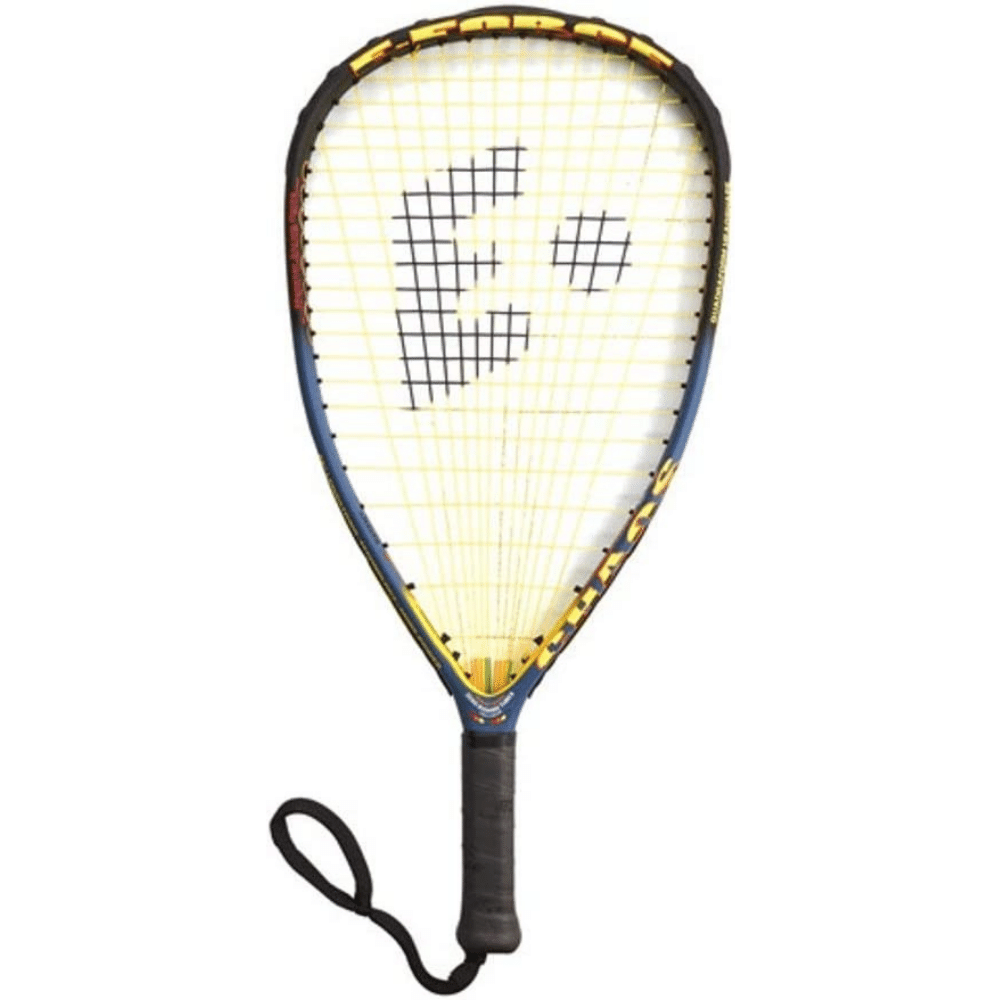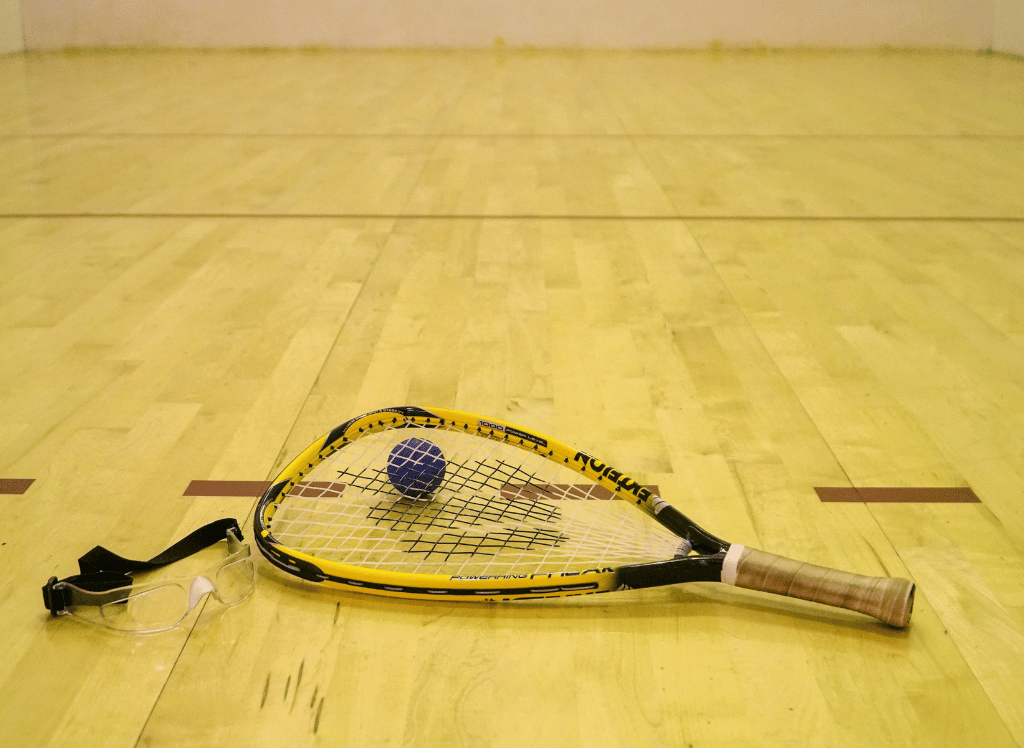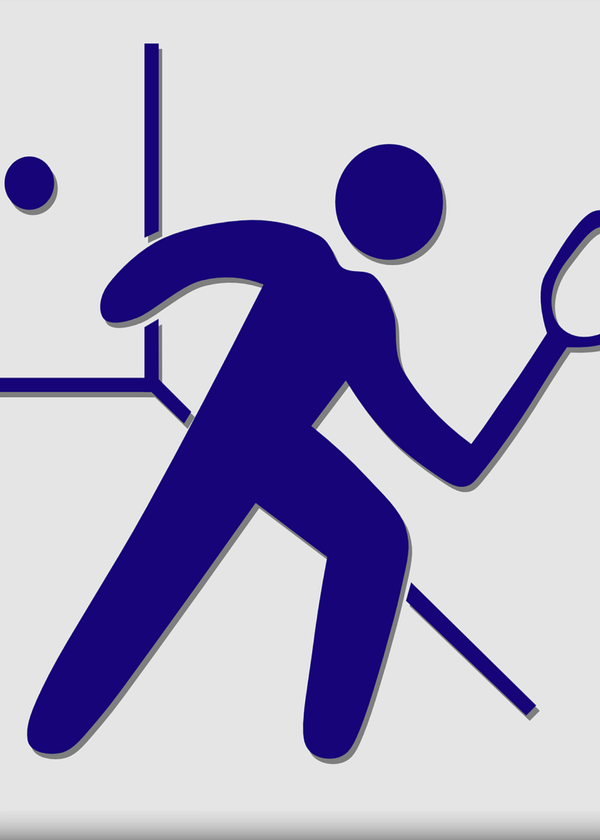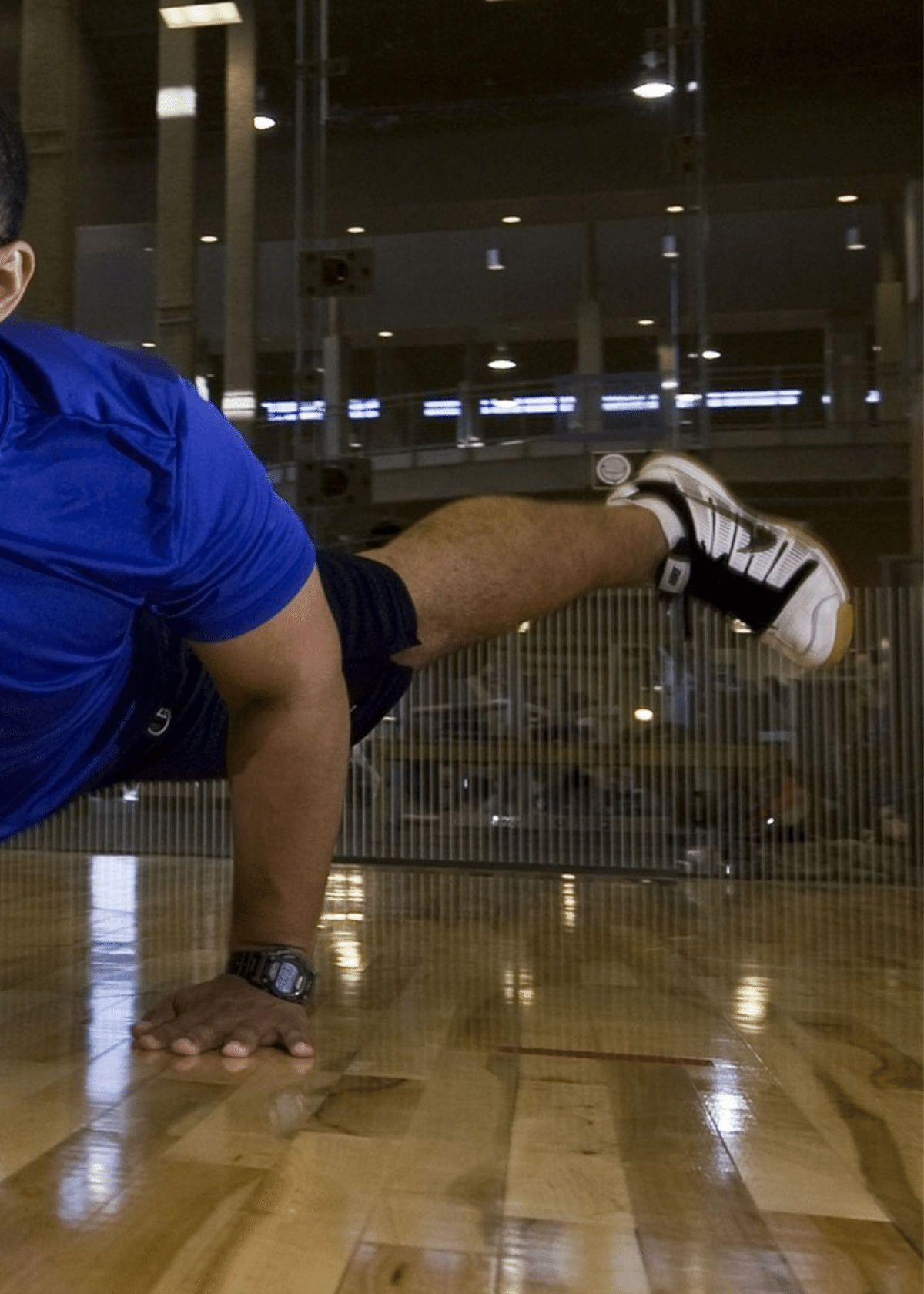Racquetball is a fast-paced, exhilarating sport that requires quick reflexes, strategic thinking, and, of course, the right equipment. If you're on your search for a new racquetball racket to up your racquet game, selecting the racquetball racquet for you is crucial. But there are many options out there, how do you know which one is right for you? Fear not! We're here to break it down for you.
We took the liberty of testing out a few rackets and we’re here to tell you all about them. Spoiler alert – one of them is not what you’re expecting.
Keep reading to find out which one of these bad boys is our favorite, and why. But don’t wait too long – these babies are flying off the shelves! No, not really! But they have some really cool handles.
Racquetball rackets come in all shapes and sizes, but there are a few things that the best racquetball rackets have in common. They're lightweight, they have a large sweet spot, and they offer good power and control. With so many racquetball rackets on the market, it can be quite an intimidating search.
The Importance of Weight in Racquetball Racquets
When it comes to racquetball racquets, weight is a significant factor. A lighter racquet can help you generate more power and fast swing speed, making it easier to react quickly during court play. On the other hand, a heavier racquet can provide more control and stability, which is essential for advanced players who need precision in their shots.
For example, if you're a beginner, you might find that a lighter racquet allows you to develop your skills more quickly. However, as you advance, you may prefer a heavier racquet that offers better control and allows you to fine-tune your game. It's all about finding the right balance that suits your playing style and skill level.
String Gauge and Its Impact on Performance
Another critical aspect to consider is the string gauge of your racquetball racquet. The string gauge refers to the thickness of the strings, and it can significantly affect your performance on the court. Thinner strings can provide more power and a better feel for the ball, while thicker strings offer more durability and control.
For instance, if you're someone who likes to generate more power in your shots, opting for a racquet with a thinner string gauge might be the way to go. Conversely, if you prefer more control and are less concerned about power, a thicker string gauge could be more suitable. It's all about understanding your playing style and what you want to achieve on the court.
The Role of Racket Head Size
The size of the racket head is another crucial factor to consider. A larger racket head can provide a bigger sweet spot, making it easier to hit powerful shots. This can be particularly beneficial for beginners who are still developing their skills and may not always hit the ball perfectly.
On the flip side, a smaller racket frame head can offer more control and precision, which is ideal for advanced players who need to place their shots accurately. For example, if you're an advanced player looking to improve your control, you might opt for a racquet with a smaller racket head. It's all about finding the right balance that suits your playing style and skill level.
Balancing Power and Control
One of the most challenging aspects of choosing a racquetball racquet is finding the right balance between power and control. Some racquets are designed to offer maximum power, while others focus on providing more control. The key is to find a racquet that offers a balance of both, allowing you to play your best game.
For example, if you're someone who likes to play aggressively and hit powerful shots, you might prefer a racquet that offers more power. However, if you prefer a more strategic approach and need to place your shots accurately, a racquet that offers more control might be more suitable. It's all about understanding your playing style and what you want to achieve on the court.
Advanced Players and Their Preferences
Advanced players often have specific preferences when it comes to racquetball racquets. They typically look for racquets that offer a balance of power and control, allowing them to play their best game. For example, an advanced player might prefer a racquet with a smaller racket head for more control, but also want a lighter racquet to generate more power.
Additionally, advanced players often pay close attention to the string gauge and weight of their racquets. They understand that these factors can significantly impact their performance on the court and choose their racquets accordingly. It's all about finding the right balance that suits their playing style and skill level.
How We Chose the Best Racquetball Racquets
It can be tough to figure out which racquet is the best for you. Do you go with a lightweight option or something heavier? What about the grip size? How much should you spend on your first racquet? After reading dozens of reviews and testing out a few dozen different racquets, we've narrowed it down to help with your search with our top 3 favorite racquets.
🏅 Best Racquetball Racquet for Value
Why we ❤️ this racquet
Introducing the Wilson Striker Racquet! This little racquet packs a big punch, and is sure to leave other players in the dust. At first glance, they may write you off as an easy win. But they'll soon be eating their words as you unleash a flurry of serves that they won't know what hit them.
The Striker is made with high-quality materials and construction, yet is still very lightweight and economical. It's perfect for players of all levels who are looking for a competitive edge. So don't let its size or price fool you - the Wilson Striker Racquet is a force to be reckoned with!
🥈 Best Racquetball Racket for Beginners
Why we ❤️ this racquet
Looking for a complete racquetball set that won't break the bank? Look no further than the Head MX Hurricane Pack. This great starter set includes a quality entry-level racquet, protective eyewear, and two balls - everything you need to get started.
The Hurricane is one of the heaviest racquets we offer, providing increased stability and control for beginning players. It's also head light, meaning it's easier to control. Plus, our Damp Plus technology absorbs impact vibration before it can reach the handle, resulting in better feel and increased precision.
So if you're looking for a fun, beginner-friendly way to get fit, the Head MX Hurricane Pack is perfect for you. Give it a try.
🥉 Your Next Level Racquet
Why we ❤️ this racquet
If you're looking to unleash some serious power on the racquetball court, the Eforce Chaos racquet is the perfect tool for the job. With a massive sweet spot and a durable construction, this racquet can take your game to the next level. The Longstring design provides incredible power and deflection, while the Zero Richter Tubes help reduce vibration in the handle for a more comfortable grip. So if you're ready to take your game to the next level, pick up an Eforce Chaos racquet today.
Racquetball Racket FAQs
People starting out are asking about racquetball racquets, but they don't know where to start. It can be hard to figure out what racquetball racket is right for you. Do you need an oversized or a midsized? What about the weight and balance?
Check out our Racquetball Racket Frequently Asked Questions page for your questions answered. We have everything from the basics, like what type of racquetball racquets should you buy, to more specific questions like how do I string my own racquet.
How to choose a racquetball racket?
There are a few things you should keep in mind when choosing a racquetball racket. First, you'll want to consider the weight of the racquet. Heavier racquets will provide more power, but may be harder to control. Lighter racquets will be easier to swing, but won't have as much power behind them. You'll also want to think about the grip size - a smaller grip will give you more control, while a larger grip will make it easier to generate power. Finally, you'll want to decide on the string tension - higher tension strings will create more spin and power, while lower tension strings will be more forgiving and easier on your arm.
How much does it cost to restring a racquetball racket?
The cost to restring a racquetball racket will depend on the type of string used, the size of the racket, and the labor involved. Generally speaking, using a synthetic gut string will cost between $15 and $30, while using a more durable string such as Kevlar or polyester will cost between $25 and $40. Restringing a large racket may also cost slightly more than restringing a smaller racket. Finally, be sure to factor in the cost of labor when budgeting for your new strings; some sporting goods stores offer racquet stringing services for an additional fee.
How to grip a racquetball racket?
Holding a racquetball racket is not dissimilar to holding a tennis racket. You will use an eastern or semi-western forehand grip, and your grip should be loose enough that you can wiggle the racket in your hands. Experiment with different grips to see which one feels the most comfortable for you.
When you grip the racket, your hands should be positioned so that your ring finger and little finger are resting on the side of the handle (away from where the strings are). Your thumb and index finger should form a V shape around the top of the handle. Use your middle finger to support the grip from underneath.
Once you have found a comfortable grip, try practicing some strokes without hitting a ball.
How to hold a racquetball racket?
The best way to hold a racquetball racket is to secure the handle. Place your thumb and first two fingers around the handle with your palm facing down. Your little finger and ring finger should be extended and lightly touching the racquetball.
To increase power, you can use a backhand grip. Grip and secure the racquet so that your dominant hand is in back of the handle and your palm faces up. This will allow you to use more of your arm muscles to generate power when you contact the ball.
How to pick a racquetball racket?
When choosing a racquetball racket there are three factors you want to consider: weight, balance, and grip.
Weight is important because you don't want a racquet that's too heavy or too light. If it's too heavy, you'll get tired quickly. If it's too light, you won't be able to control the ball as well.
Balance is also important because you don't want a racquet that's top-heavy or bottom-heavy. A top-heavy racquet will make it harder to keep your swing level. A bottom-heavy racquet will cause the ball to go up in the air more when you hit it.
Grip is important because if your grip is too small, you won't be able to generate enough power. If it's too big, you'll have trouble controlling the racquet.
The best way to find a racquetball racquet that's just right for you is to go shop at a store location and try out different ones until you find one that feels comfortable.
What racquets do pro racquetball players use?
There is no one answer to this question as different professional racquetball players will use different racquets based on their individual playing style. However, some of the more popular brands among professional racquetball players include Ektelon and Head. These brands offer a variety of different models of racquets that are designed for different levels of play, so it is important to choose the right model for your own skill level. In addition to choosing the right brand and model of racket, it is also important to string your racket with the correct type of string and tension in order to optimize performance. While there is no single answer to what the best racket and string setup is for every player. Accept the fact that you're not going to be the best without the proper equipment.
How long do racquetball racquets last?
It depends on how often you play, the quality of the racquet, and how well you take care of it. A high-quality racquet that is well taken care of can deliver you years of play before you may need to shop again. However, a low-quality or poorly taken care of racquet may only last for a few months.
Racquetball racquets are made from a variety of materials, including aluminum, graphite, and titanium. The quality and durability of a racquet depend on the material it is made from. Aluminum racquets are typically less expensive but less durable than graphite or titanium racquets. Graphite and titanium racquets are more expensive but also more durable.
What are the official rules of racquetball?
Check out the free International Racquetball Federation for updates on the official rules.
What is the best racquetball racquet for beginners?
For beginners, a lighter racquet with a larger racket head is often the best choice. This combination allows for easier handling and a bigger sweet spot, making it easier to hit powerful shots and develop your skills.
How does string gauge affect racquetball performance?
The string gauge refers to the thickness of the strings. Thinner strings can provide more power and a better feel for the ball, while thicker strings offer more durability and control. Choosing the right string gauge depends on your playing style and what you want to achieve on the court.
What should advanced players look for in a racquetball racquet?
Advanced players typically look for racquets that offer a balance of power and control. They often prefer racquets with a smaller racket head for more control and a lighter weight to generate more power. Additionally, they pay close attention to the string gauge and weight of their racquets to optimize their performance on the court.
Best Racquetball Rackets for you
So what’s the best racquetball racket for you? Whether you're a beginner looking for a lighter racquet to develop your skills or an advanced player seeking a racquet that offers a balance of power and control, there are plenty of options out there to suit your needs. By considering factors like weight, string gauge, and racket head size, you can find the perfect racquet to help you up your game.
Please check out our other Racquetball articles:





